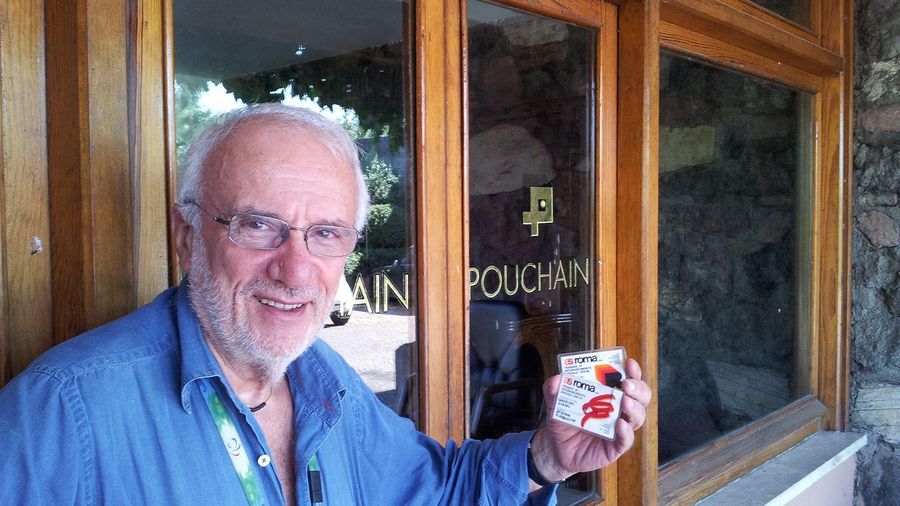

A successful and inventive designer in his own right, for Roma fans Gratton will always be identified with the Lupetto – and the individual sense of expression and Romanismo that his creation, and others, would bring.
Born in Milan in 1939, Gratton would end up leaving a legacy in the Eternal City. He moved to the capital to work for Rai, the state broadcaster, as a graphic animator. His style and creations quickly created a stir, leading some to call him ‘The little Walt Disney of television’.
In 20 years as a designer he helped create a number of television series, working with some of the biggest names of the time.
His first forays in sport came in the mid-1970s, after he met AS Roma director Gilberto Viti while working on a commission for the European Athletics Championship in 1974.
He went on to design the club’s season ticket card for the 1974-75 season, debuting for the first time the typography with “AS” written in yellow and red and “Roma” completed in black. It was the first steps in the creation of a whole new visual identity for the club, a vision designed and executed largely by Gratton.
For the president at the time, Gaetano Anzalone, Gratton became his go-to man; designing tickets, suits, clothing, commercial products and more for the club.
The culmination of that sweeping creativity came in 1978. On July 19 the club unveiled its new logo; a black ‘R’ with a yellow and red border, and the stylised ‘Lupetto’ wolf's head. The new look was not immediately popular, leading the club to publish an editorial in Il Messaggero.
The article, titled ‘Il Lupacchiotto’ (even the club, initially at least, avoided the Lupetto nickname) would prove to be somewhat prophetic:
“This is how I was born, the pure son of the female wolf (‘as featured on the classic logo)… I tell you, from the heart, that I am not looking to obscure our legacy, that of our mother, I am just younger. Give me time and I will earn your affection.”










1 / 8

2 / 8

3 / 8

4 / 8

5 / 8

6 / 8

7 / 8

8 / 8

And that’s how things progressed, with fans quickly embracing the Lupetto – as the design, along with the striking new kits and products from Pouchain would put the Giallorossi at the cutting edge of sports market throughout the country.
Roma wore the new gear for the first time on December 17, beating Juventus 1-0 thanks to a goal from Agostino Di Bartolomei. Gratton, pitchside that day, revelled in the moment; as his new badge and new kit – nicknamed the ice lolly (‘ghiaciolo’) by fans because of its colour – got off to a thrilling start.
Gratton would go on to design the graphics for the two European finals Rome would host that period, in 1977 and 1984, and for UEFA he worked on the designs for the European Championships in both 1980 and 1984.
Gratton’s name will always be tied with the Lupetto for Roma fans, and the kits the club used between 1978 and the early 1980s. So much grew out of those early changes; a culture and aesthetic that would only evolve as the years passed – the badge and its surrounding designs eventually become part of the tradition it had all once broken with.
“The Lupetto should be almost a basic symbol,” Gratton said in an interview in 2012.
“Something we can recognise almost from birth, that can be reproduced by anyone, anywhere. It’s that simplicity that makes it so lasting.”
I confirm that I have read the privacy policy.
© 2018-2025 Soccer S.r.l. – EU VAT IT09305501000 - all rights reserved. The AS Roma names, logos and artwork are registered or unregistered trademarks of Soccer S.r.l. All other trademarks may be the property of their respective holders.
 Tickets
Tickets
 Shop
Shop

































